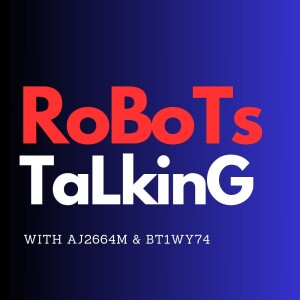

Decoding the Brain: How AI Models Learn to "See" Like Us
Have you ever wondered if the way an AI sees the world is anything like how you do? It's a fascinating question that researchers are constantly exploring, and new studies are bringing us closer to understanding the surprising similarities between advanced artificial intelligence models and the human brain.
A recent study delved deep into what factors actually make AI models develop representations of images that resemble those in our own brains. Far from being a simple imitation, this convergence offers insights into the universal principles of information processing that might be shared across all neural networks, both biological and artificial.
The AI That Learns to See: DINOv3
The researchers in this study used a cutting-edge artificial intelligence model called DINOv3, a self-supervised vision transformer, to investigate this question. Unlike some AI models that rely on vast amounts of human-labeled data, DINOv3 learns by figuring out patterns in images on its own.
To understand what makes DINOv3 "brain-like," the researchers systematically varied three key factors during its training:
- Model Size (Architecture):They trained different versions of DINOv3, from small to giant.
- Training Amount (Recipe):They observed how the model's representations changed from the very beginning of training up to extensive training steps.
- Image Type (Data):They trained models on different kinds of natural images: human-centric photos (like what we see every day), satellite images, and even biological cellular data.
To compare the AI models' "sight" to human vision, they used advanced brain imaging techniques:
- fMRI (functional Magnetic Resonance Imaging):Provided high spatial resolution to see which brain regions were active.
- MEG (Magneto-Encephalography):Offered high temporal resolution to capture the brain's activity over time.
They then measured the brain-model similarity using three metrics: overall representational similarity (encoding score), topographical organization (spatial score), and temporal dynamics (temporal score).
The Surprising Factors Shaping Brain-Like AI
The study revealed several critical insights into how AI comes to "see" the world like humans:
- All Factors Mattered:The researchers found that model size, training amount, and image type all independently and interactively influenced how brain-like the AI's representations became. This means it's not just one magic ingredient but a complex interplay.
- Bigger is (Often) Better:Larger DINOv3 models consistently achieved higher brain-similarity scores. Importantly, these larger models were particularly better at aligning with the representations in higher-level cortical areas of the brain, such as the prefrontal cortex, rather than just the basic visual areas. This suggests that more complex artificial intelligence architectures might be necessary to capture the brain's intricate processing.
- Learning Takes Time, and in Stages:One of the most striking findings was the chronological emergence of brain-like representations.
◦ Early in training, the AI models quickly aligned with the early representations of our sensory cortices (the parts of the brain that process basic visual input like lines and edges).
◦ However, aligning with the late and prefrontal representations of the brain required considerably more training data.
◦ This "developmental trajectory" in the AI model mirrors the biological development of the human brain, where basic sensory processing matures earlier than complex cognitive functions.
- Human-Centric Data is Key:The type of images the AI was trained on made a significant difference. Models trained on human-centric images (like photos from web posts) achieved the highest brain-similarity scores across all metrics, compared to those trained on satellite or cellular images. While non-human-centric data could still help the AI bootstrap early visual representations, human-centric data proved critical for a fuller alignment with how our brains process visual input. This highlights the importance of "ecologically valid data"—data that reflects the visual experiences our brains are naturally exposed to.
AI Models Mirroring Brain Development
Perhaps the most profound finding connects artificial intelligence development directly to human brain biology. The brain areas that the AI models aligned with last during their training were precisely those in the human brain known for:
- Greater developmental expansion(they grow more from infancy to adulthood).
- Larger cortical thickness.
- Slower intrinsic timescales(they process information more slowly).
- Lower levels of myelination(myelin helps speed up neural transmission, so less myelin means slower processing).
These are the associative cortices, which are known to mature slowly over the first two decades of life in humans. This astonishing parallel suggests that the sequential way artificial intelligence models acquire representations might spontaneously model some of the developmental trajectories of brain functions.
Broader Implications for AI and Neuroscience
This research offers a powerful framework for understanding how the human brain comes to represent its visual world by showing how machines can learn to "see" like us. It also contributes to the long-standing philosophical debate in cognitive science about "nativism versus empiricism," demonstrating how both inherent architectural potential and real-world experience interact in the development of cognition in AI.
While this study focused on vision models, the principles of how AI learns to align with brain activity could potentially extend to other complex artificial intelligence systems, including Large Language Models (LLMs), as researchers are also exploring how high-level visual representations in the human brain align with LLMs and how multimodal transformers can transfer across language and vision.
Ultimately, this convergence between AI and neuroscience promises to unlock deeper secrets about both biological intelligence and the future potential of artificial intelligence.
More Episodes
All Episodes>>Create Your Podcast In Minutes
- Full-featured podcast site
- Unlimited storage and bandwidth
- Comprehensive podcast stats
- Distribute to Apple Podcasts, Spotify, and more
- Make money with your podcast












